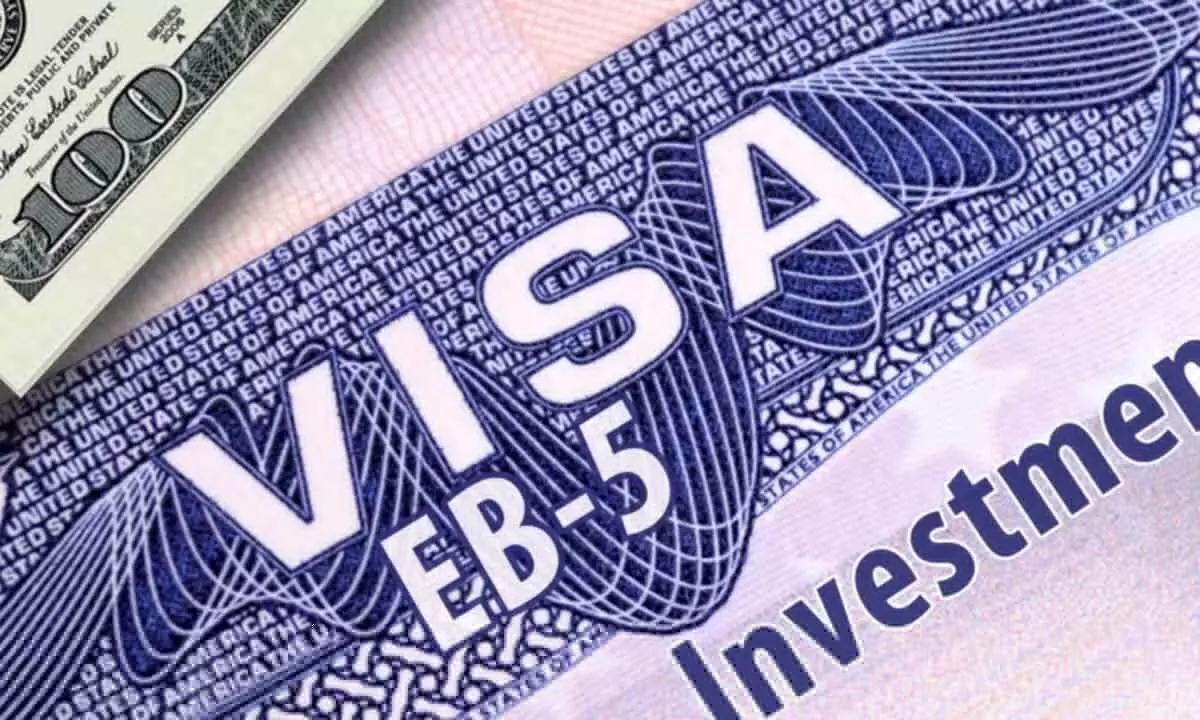Inefficiency delaying EB-5 visas to Indian investors: IIUSA
Indian investors have to wait for over six years, besides facing uncertainty over returns
image for illustrative purpose

The broad categories available for investment are rural and urban projects, infrastructure projects from roadway bridges to sewage treatment plants and internet cable and the likes. EB-5 investments find place in the real estate projects as it is easy to demonstrate the number of jobs created and, measure return on investment for the investor. The US releases 10,000 EB-5 visas every year, of which, each country is allotted around 7.2 per cent
The US, despite being known as a developed country, has its own flaws. The two topping this dubious category are the gun culture and the long waiting period to get a visa.
Among the highly expensive visas, ostensibly to fast-track the process, EB-5 immigrant investor programme leaves Indian investors to deal with uncertainty even after pumping in anything between $ eight lakh and $10,50,000, essentially because of the apathy of the US administration.
India trails China as the second largest EB-5 investor market for the US. Since 2000, over 5,200 Indian investors have invested around $2.2 billion through EB-5, even as the global figure stands at approximately 113,000 investors, during the same period.
The number of form I-526 filed from India, for this particular category, is 39 in the financial year 2008. This shot up to 1,121 in FY 2018 but dropped to 1,027 in FY 2019 and stood at 935 in FY 2020.
Speaking to Bizz Buzz, Aaron Grau, president, Invest in USA (IIUSA), an industry trade association for the EB-5 Regional Center Program, said: “EB-5 applications can take a long time largely because of the US administration’s inefficiency. There are too few people available in the agencies to review applications. The immigration processing is cumbersome across the available EB-5, H1B and other visa categories. We are working to bring attention to that and fix it but the investors need to be aware that the processing time will be delayed.”
On the deliberations an investor should take up before making an investment, Grau said, “It takes five to six years or more for the investor to receive the EB-5 visa, which is faster when compared to other categories that take longer. Sometimes, EB-5 projects are not revenue generating and I will not be able to comment upon returns on such an investment. The investor should remember that nothing is guaranteed”.
Going further, Grau said “It is possible that an EB-5 investment might not work out and it is likely that an investor may lose money. But it does not mean that the investor will lose the opportunity to secure an EB-5 visa. As long as they make the investment and create a minimum of 10 jobs, they will still be able to secure the visa. The drawback will be that their investment will not return in full or it may not be to the extent they expected.”
The broad categories available for investment in the US are rural and urban projects, infrastructure projects from roadway bridges to sewage treatment plants and internet cable and the likes. Typically these economic development projects are undertaken in areas where there are few jobs, so as to attract commerce and employment.
By and large EB-5 investments find place in the real estate projects as it is easy to demonstrate the number of jobs created and, measure return on investment for the investor.
“But, these economic development projects such as the real estate projects are likely to face supply chain issues, hurricane and other financial concerns that can impact the project itself,” he cautioned.
The US government releases 10,000 EB-5 visas every year, of which, each country is allotted around 7.2 per cent. The percentage varies year-on-year depending on the number of visa applications processed.
There are two types of investments; if it is in a targeted employment area in the rural or urban distressed communities, the amount is $800,000 whereas it is $10,50,000 if it is not under that area.
“However, most of the projects are in targeted employment area, as the government wants to bring an investor for a lower amount. Additionally, the investor will have to incur the cost of hiring a lawyer, application fees and logistic fees, which will together be over $900,000. Moreover, the investor has to pay taxes to the Indian government for the rupee leaving the country,” Grau pointed out.
The investors also have an investment option under the reserved category that is set aside for quicker processing or a shorter line.
Elaborating on this, he pointed out, “Rural and infrastructure projects come under this category. The technicalities of how the US citizenship and immigration and the State department actually process immigrant applications intended to be through reserved category is cloudy and, we are trying to work with the entities to get clarification. It is part of the new law and the department is still working through it to apply it equitably.”
However, Indian UHNI’s care less about the waiting period, the inefficiency of the US department or the investment amount and its returns.
The yearning for a standard of living or child’s education in Ivy League schools, has indeed led India to emerge as the second largest EB-5 investor market for the US.

